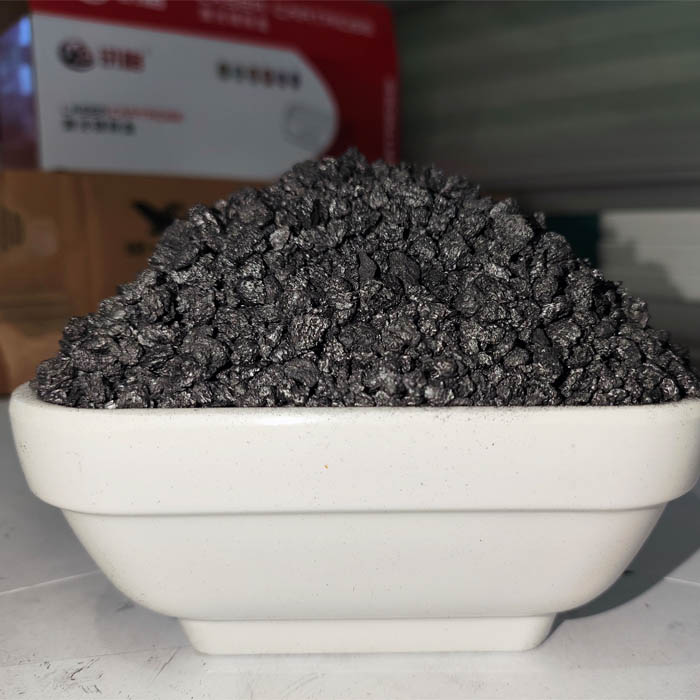Nov . 25, 2024 08:08 Back to list
gas adsorbents
The Role of Gas Adsorbents in Environmental and Industrial Applications
Gas adsorption is a critical process utilized in various industrial and environmental applications. At the heart of this process are gas adsorbents—materials capable of capturing and holding gas molecules on their surfaces. These adsorbents play a vital role in air purification, natural gas storage, volatile organic compound (VOC) removal, and even in the development of advanced energy technologies.
Understanding Gas Adsorption
Gas adsorption involves the adhesion of gas molecules to the surface of a solid material, leading to a concentration of these molecules on the adsorbent's surface. This phenomenon can occur through physical adsorption (physisorption) or chemical adsorption (chemisorption). Physisorption relies on weak van der Waals forces, making it generally reversible, whereas chemisorption involves the formation of stronger chemical bonds, resulting in a more permanent attachment.
Types of Gas Adsorbents
Gas adsorbents can be classified into several categories based on their composition and structure
1. Activated Carbon Widely used due to its large surface area and porous structure, activated carbon is effective in adsorbing various gases, including water vapor, volatile organic compounds (VOCs), and even certain pollutants. Its versatility makes it a popular choice for air and water purification systems.
2. Zeolites These are crystalline aluminosilicate materials with well-defined pore structures. Zeolites are known for their ion-exchange properties and selective adsorption capabilities, making them suitable for applications such as gas separation and purification.
3. Metal-Organic Frameworks (MOFs) MOFs are a new class of materials formed by the coordination of metal ions with organic ligands. Their tunable porous structures allow for selective gas adsorption under specific conditions, making them ideal for tasks like carbon capture and hydrogen storage.
gas adsorbents

4. Silica Gel Commonly used as a desiccant, silica gel can adsorb moisture and various VOCs. Its relatively low cost and high availability make it a practical option for numerous applications.
Applications of Gas Adsorbents
1. Air Purification Activated carbon and zeolites are frequently employed in air purification systems to remove harmful chemicals, odors, and particulate matter. This is essential in both industrial applications and residential environments, contributing to healthier air quality.
2. Natural Gas Storage Gas adsorbents play a crucial role in the storage and transportation of natural gas. By adsorbing gas molecules onto their surfaces, these materials can increase the efficiency of gas storage systems, reducing pressure and volume requirements.
3. Carbon Capture With an increasing focus on mitigating climate change, gas adsorbents, particularly MOFs, are being researched for their ability to capture carbon dioxide from industrial emissions. This technology could significantly reduce greenhouse gas emissions and contribute to cleaner air.
4. Refrigeration and Air Conditioning Adsorption technology is also applied in cooling systems where gas adsorbents can facilitate heat transfer and energy efficiency. This environmentally friendly alternative to traditional refrigeration methods helps reduce energy consumption.
Challenges and Future Directions
Despite their advantages, the development and implementation of gas adsorbents face challenges. Issues such as material stability, scalability, and costs need to be addressed to enhance their practical application. Ongoing research is focused on creating novel adsorbents with higher capacities and selectivities for various gases.
In conclusion, gas adsorbents are indispensable in managing gas emissions and enhancing energy efficiency across multiple sectors. As research continues to evolve, we can expect further innovations that leverage these materials’ unique properties to tackle pressing environmental and industrial challenges, ultimately paving the way for a more sustainable future.
-
Fe-C Composite Pellets for BOF: Enhance Steelmaking Efficiency
NewsAug.07,2025
-
Eco-Friendly Granule Covering Agent | Dust & Caking Control
NewsAug.06,2025
-
Fe-C Composite Pellets for BOF: High-Efficiency & Cost-Saving
NewsAug.05,2025
-
Premium Tundish Covering Agents Exporters | High Purity
NewsAug.04,2025
-
Fe-C Composite Pellets for BOF | Efficient & Economical
NewsAug.03,2025
-
Top Tundish Covering Agent Exporters | Premium Quality Solutions
NewsAug.02,2025
